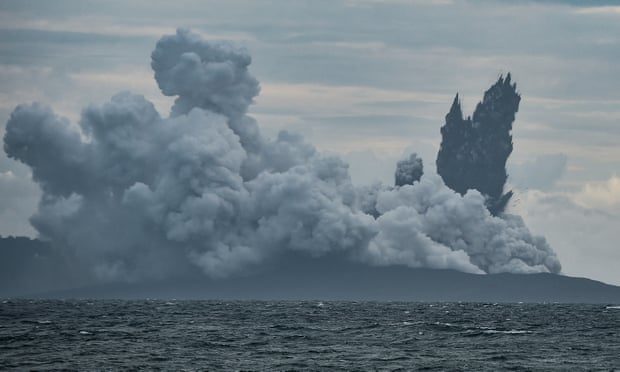
Scientists said Anak Krakatau now has a volume of 40-70 cubic metres, having lost up to 180m cubic metres of volume since the eruption on 22 December.
The analysis from Indonesia's Centre for Volcanology and Geological Disaster Mitigation demonstrates the power of the tsunami that crashed into 186 miles of coastline in Sumatra and Java.
More than 420 people died in the waves that reached up to 2m in height, and 40,000 were displaced.
The centre said the crater peak was 110m high on Friday, compared to 338m in September.
Experts have largely relied on satellite radar images to work out what happened to the volcano. Cloud cover, continuing eruptions and high seas have hampered inspections. The centre said it would get more precise results from further visual inspections.
Authorities have warned residents to stay at least a mile away from the coastline of the Sunda Strait, which separates Java and Sumatra, because of the risk of another tsunami.
But experts now say another potential tsunami triggered by the volcano collapsing again would be less severe due to its reduced mass.
Anak Krakatau, which means Child of Krakatoa, is the offspring of the infamous Krakatoa volcano whose monumental eruption in 1883 triggered a period of global cooling.
AP



180 million m3 is quite a chunk of rock.